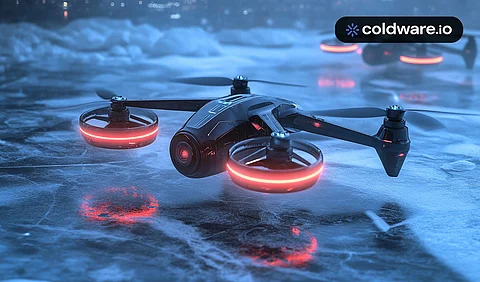

Coldware (COLD) has quickly become one of the most exciting presale tokens of 2025, and analysts believe it could set new records in the real-world asset (RWA) sector. Unlike most projects that focus purely on digital infrastructure, Coldware (COLD) integrates blockchain with hardware devices and RWA tokenization. Its Web3-enabled smartphones are designed to make digital asset storage, NFT access, and crypto payments seamless for everyday users. As Coldware (COLD) builds this physical gateway into Web3, experts argue it could outperform older giants like Cardano (ADA) and even specialized leaders such as Chainlink (LINK).
The critical advantage Coldware (COLD) has over both Cardano (ADA) and Chainlink (LINK) is its consumer-first model. RWA platforms typically face hurdles because average investors struggle to access tokenized assets in a practical way. Coldware (COLD) solves this by integrating RWA services into its devices, making real estate tokens, commodities, or digital collectibles available through a secure, mobile-first interface. Instead of being limited to institutional adoption, Coldware (COLD) enables mass participation. This positions the token as not just infrastructure, but a cultural and consumer gateway into Web3.
Cardano (ADA) has shown resilience, recently crossing $0.96 with a market cap above $34 billion. With predictions suggesting Cardano (ADA) may outperform Solana (SOL) in September, confidence in its academic foundation and secure staking model remains strong. However, Cardano (ADA) has long faced criticism for slow development timelines and ecosystem adoption. While it remains a reliable top-10 altcoin, its growth ceiling appears capped compared to younger, more disruptive tokens like Coldware (COLD).
Chainlink (LINK) remains the dominant force in blockchain oracles, connecting real-world data to decentralized applications. Its recent whale accumulation of over 1.15 million tokens and a price rally to $25 highlight investor faith in its future. Moreover, Chainlink (LINK) has been deeply involved in RWA tokenization, partnering with major banks and institutions to bring financial data on-chain. Yet while Chainlink (LINK) thrives as the backend infrastructure for RWA markets, Coldware (COLD) is positioning itself as the front-end adoption driver, putting Web3 directly in users’ hands through its hardware.
While Cardano (ADA) and Chainlink (LINK) are strong and respected players, their size makes explosive growth harder to achieve. Coldware (COLD), still in presale stages, is uniquely positioned to deliver exponential returns. Analysts predict that as its RWA platform gains traction, Coldware (COLD) could break presale fundraising records and potentially outperform even Chainlink’s (LINK) whale-driven momentum. With its dual strategy of hardware innovation and RWA integration, Coldware (COLD) is more than just a token — it’s an ecosystem bridging traditional finance and everyday digital usage.
Cardano (ADA) will continue to serve as a reliable Layer-1, and Chainlink (LINK) will remain indispensable in the oracle market. However, Coldware (COLD) is building something entirely different: a mass adoption channel for RWA and Web3 through its hardware and consumer-first design. That’s why experts increasingly believe Coldware (COLD) has the potential not just to match, but to surpass, records set by both Cardano (ADA) and Chainlink (LINK).
For more information on the Coldware (COLD) Presale:
Visit Coldware (COLD)
Join and become a community member:
Join our WhatsApp Channel to get the latest news, exclusives and videos on WhatsApp
_____________
Disclaimer: Analytics Insight does not provide financial advice or guidance on cryptocurrencies and stocks. Also note that the cryptocurrencies mentioned/listed on the website could potentially be scams, i.e. designed to induce you to invest financial resources that may be lost forever and not be recoverable once investments are made. This article is provided for informational purposes and does not constitute investment advice. You are responsible for conducting your own research (DYOR) before making any investments. Read more about the financial risks involved here.
